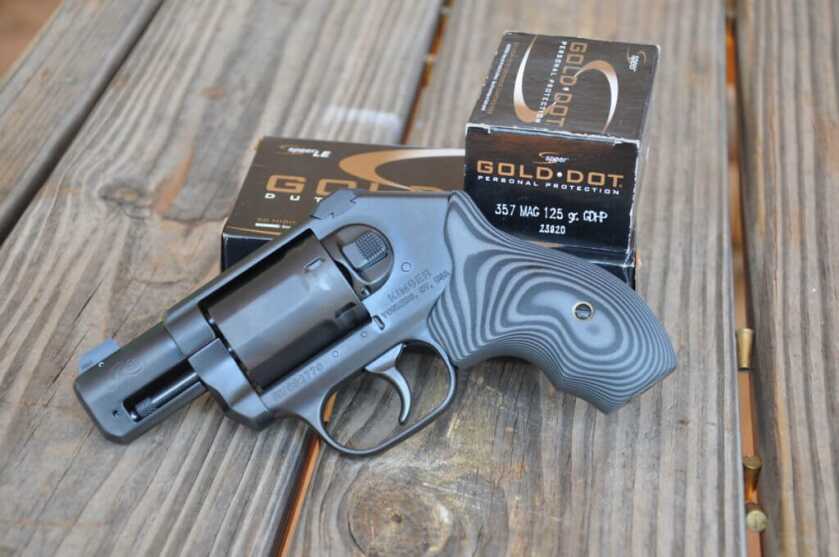
The story goes that a reporter asked Mark Twain what he thought about the rumor of his death. Legend has it that Twain replied, “reports of my death have been greatly exaggerated.” The same can be said of reports that the revolver is obsolete. It is true that .38 Special/.357 Magnum revolver production is not what it once was. However, if the market was dead, Colt, Kimber, Ruger, Smith & Wesson, and Taurus (listed alphabetically) would not be introducing multiple new products every year. The small revolver seems to be experiencing a resurgence both at the local gun counter. One only has to look on Facebook to find groups like I’m with Roscoe, The Snub Club, and The Art of the Revolver. They represent a large following for the round gun.
In 2016, Kimber surprised the market by introducing the K6 revolver chambered in .357 Magnum. The K6 was innovative and set a new standard for revolvers. The size of the frame was slightly larger than a S&W J-frame and smaller than a K-frame. The closest comparator, at the time, was the old Colt Detective Special D frame. Like the Colts, the K6 held six shots but was chambered in .357 Magnum. The K6 featured an enclosed hammer similar to a S&W 640. However, that is where the comparison really ends. I originally evaluated the K6 with a 3” barrel. I was extremely impressed, and when Kimber brought out the 2” Deep Cover, I requested one for testing.
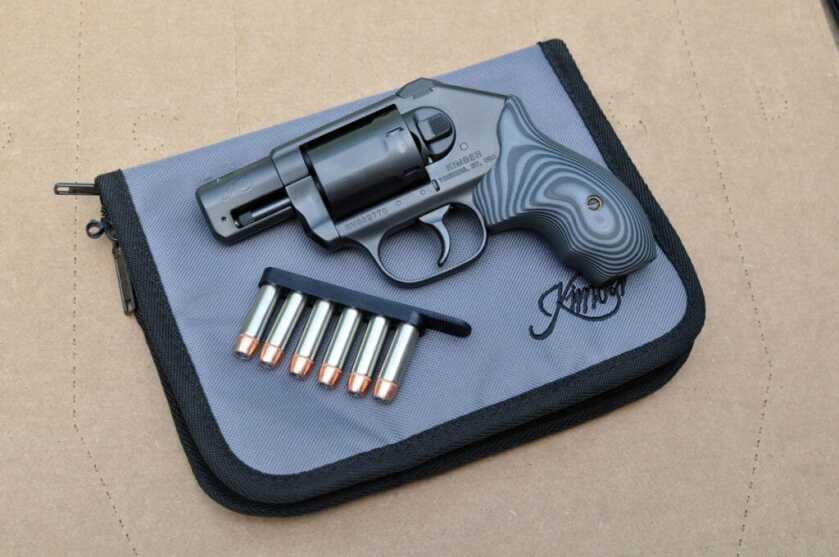
K6 Deep Cover Goodness
Fitting for the model’s name, the K6 Deep Cover features a concealed hammer, giving it a snag-free profile. With the exception of the front sight, the K6 DC is completely void of offending sharp edges. While this seems like a simple thing, it takes time and attention to detail, to make it happen. The K6 is an all-steel pistol that contains no MIM components and weighs in at 22 ounces. The frame is beefy with a fitted slide plate that is retained by three serious hex screws. Instead of traditional flutes, the K6 cylinder features flats. These flats, along with the offset cylinder stop notches, strengthen the cylinder while maintaining the smooth lines of the K6. The recoil shield has been scalloped and the cylinder release is a checkered button that is easily manipulated. In addition, the charge holes are recessed allowing the cartridge to fit flush with the cylinder. This is a very nice and classic touch.
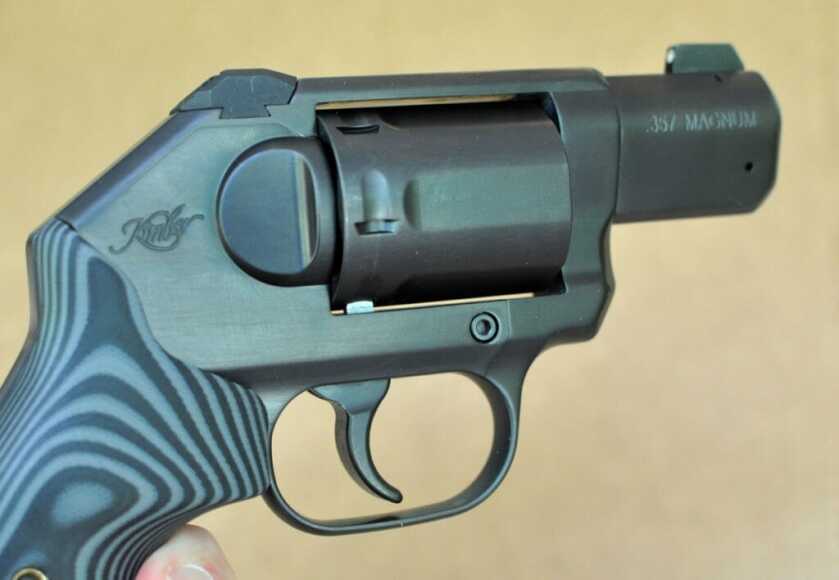
One noticeable feature is the elongated trigger guard that provides more space for large fingers or when wearing gloves. The trigger has a smooth face with radiused edges. The ejection rod is shrouded and the exterior profile of the barrel is more oval than round. The Deep Cover features a pinned front sight and a low profile rear sight that provides a Novak like sight picture with a three-dot Tritium inserts. The rear sight is dovetailed to allow adjustment and replacement. The front sight is pinned to allow the owner to replace it if needed. Options include a black blade, white dot, tritium, or fiber optic blades.


Kimber states that the K6 has the smallest diameter of any six-shot .357 Magnum on the market. By my measurements, the cylinder on the K6 DC is only 0.09” larger than my S&W 640 Pro. As a reminder, the 640 is only a five-shot revolver. The action on the Kimber is different from a Colt or a Smith & Wesson. The mainspring on the K6 is a coil over strut design like a Smith J frame which eliminates any “stacking” like that found on a Colt. However, the cylinder locks up much sooner in the double-action pull than on a Smith. While different, I came to appreciate the smoothness and clean break of the K6 trigger.
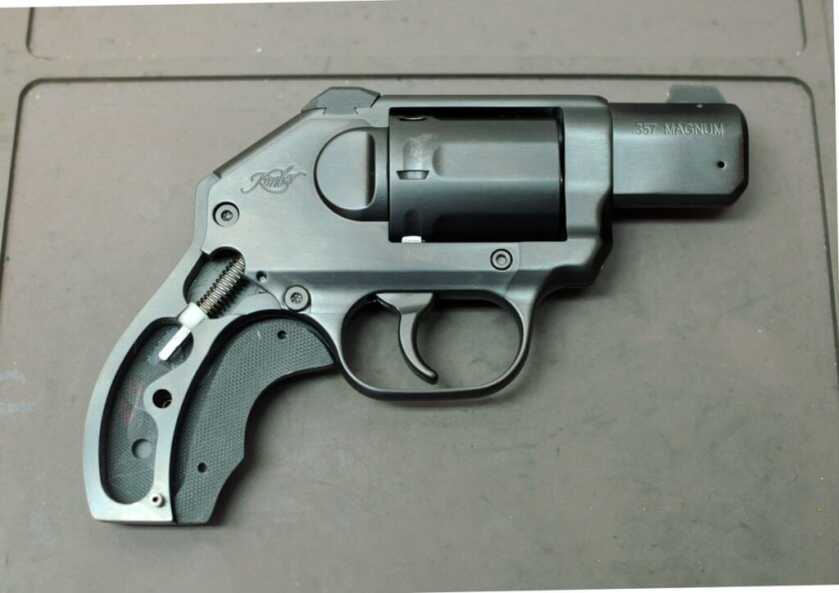
The boot style stocks on the K6 DC are made from G-10 and are designed to be very compact. The stocks feature a single finger groove and fit the frame perfectly with no gaps or overlap. As a matter of fact, I had some difficulty getting them off the pistol for photographs. To improve fit, the VZ stocks have two additional index pins. The high horn design of the stocks is both practical and allows for a positive purchase. Finally, Kimber chose to finish the Deep Cover in a durable DLC over matte stainless that is both durable and esthetically pleasing.
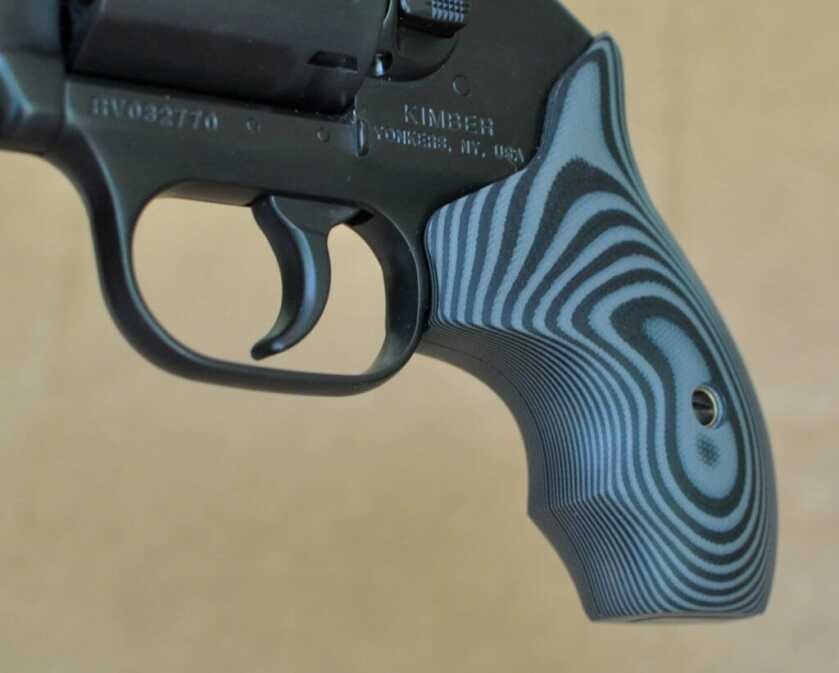
Range Time
Being a snub aficionado, for most of my life, I looked forward to hitting the range. From previous experiences, I knew that, while chambered for .357 Magnum, the K6 DC is much more suited for .38 +P loads. However, some will want to carry magnum loads and I felt obligated to test at least one .357 personal defense load.
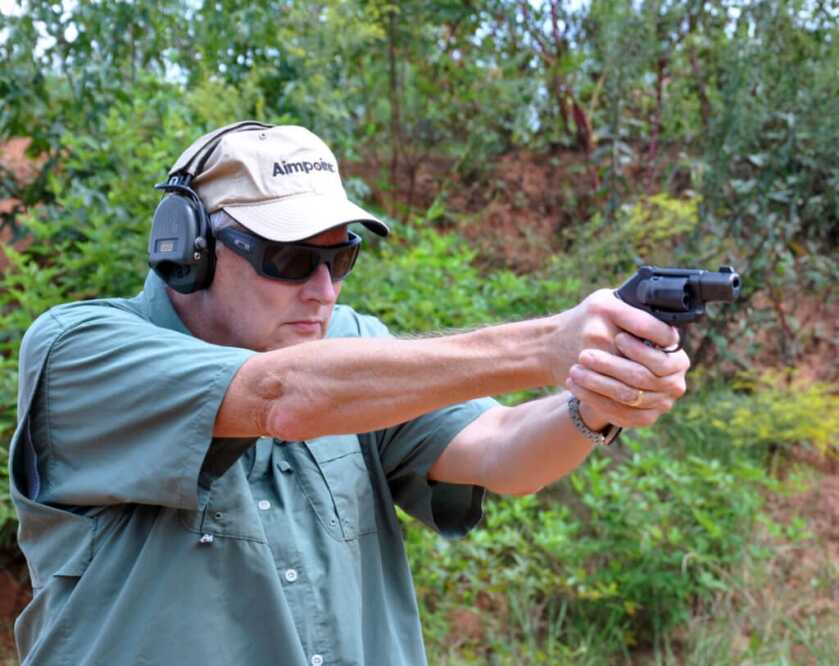
I have long been a fan of Speer’s Gold Dot loadings in all calibers. I stoked the Deep Cover up with six Speer 125 gr. Magnums and got down to the dirty work of testing. The Gold Dot averaged a blistering 1,254 fps out of the little Kimber and the recoil was excruciatingly violent. This was exaggerated by the short barrel and the small boot style stocks. Even for those who are not sensitive to recoil, the amount of recoil, and the long recovery time, make the magnum load a non-starter for personal defense. At 10 yards my first, and only group, with this load, measured just under 3”. Using an online calculator, I determined that this load produces 436-foot pounds of energy! That is a lot of energy for both the shooter and the pistol. To coin an old adage, “just because you can, doesn’t mean you should!”
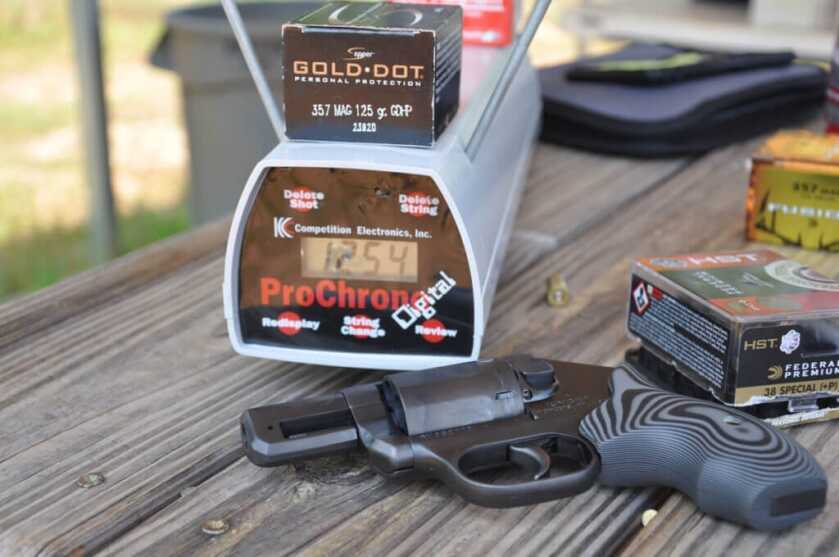
Moving on to my two favorite .38 Special +P loads, I shot Federal’s 130 gr. HST Micro and the proven Speer 135 gr. Gold Dot Short Barrel loads. They chronographed 786 fps and 815 fps respectively. Both the Federal and the Speer loads are specifically designed for short barrels. The Federal HST Micro is a wadcutter hollow point design while the Speer load is their proven Gold Dot projectile. Groups averaged under 1.5” with an occasional flyer due to shooter error. Recoil was mild and both loads are well suited to the K6 DC. They also shot very close to point of aim which is important.
I have come to appreciate Ken Hackathorn’s 10-10-10 drill to test both my performance and the shooting characteristics of the pistol I am testing. As the name implies, the drill is 10 shots, shot from 10 yards, in 10 seconds. The drill requires attention to fundamentals, concentration, and establishing a proper cadence. With revolvers, I shoot the drill in two five-shot strings, each with a five-second par time. For compact revolvers, I bring the target into 7 yards. I only shoot the drill once for score. Shooting the K6 Deep Cover, I managed a score of 95 out of a possible 100. I pulled the group to the left which I first attributed to improper trigger finger placement and the smooth G-10 stocks that allowed the pistol to shift in my hand. A closer examination found that the rear sight was slightly off-center. A small adjustment and the issue was resolved.
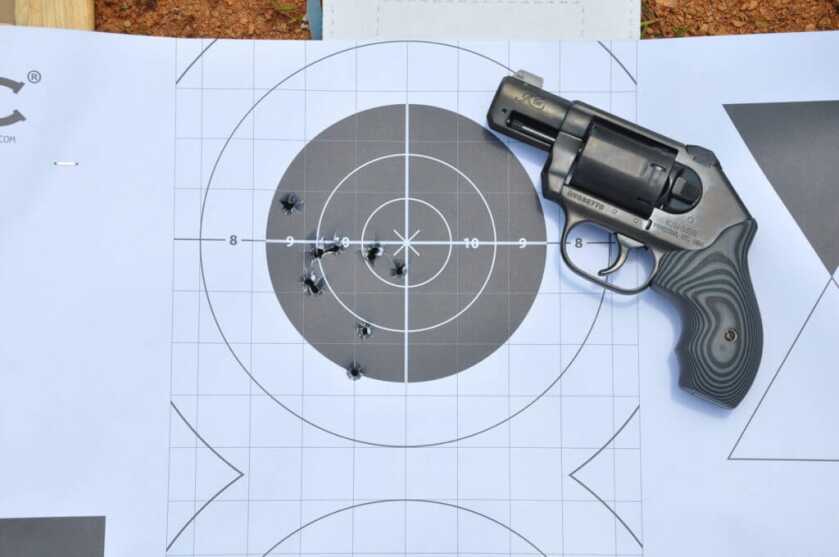
The more we shot the little K6, the more it grew on us. Even with a shortened ejection rod, extraction was positive and I appreciated the rounded edges on the end of the rod. Everyone who examined the K6 DC commented on the high visibility sights. The comment of, “this is what revolver sights should be” was heard more than once. We were hitting a steel vitals silhouette, offhand, from 45 yards with boring regularity.
| Kimber K6 Deep Cover Range Test | ||
| .357 Magnum | Average Velocity | Accuracy |
| Speer 125 gr. Gold Dot HP | 1,254 fps | 2.75” |
| .38 Special | Average Velocity | Accuracy |
| Federal 130 gr. HST Micro | 786 fps | 1.5” |
| Speer 135 gr. Gold Dot Short Barrel | 815 fps | 1.25” |
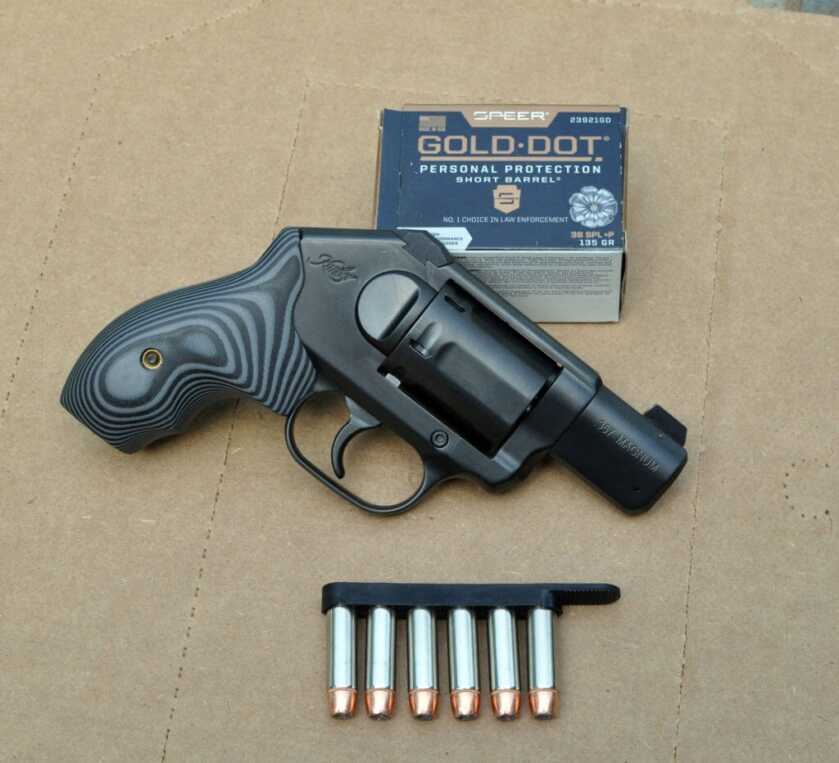
Options and Final Thoughts
For daily belt carry, Galco offers its excellent Combat Master holster. For those inclined, the Ankle Glove is a viable option for a back-up or low profile carry. Galco holsters, along with speed loads, pouches, sights, and optional stocks are available directly from Kimber.
Since 2016, Kimber has expanded the K6 line to include 2” and 3” barrel lengths, different finishes, and, more recently, the SADA series that has a traditional exposed hammer. The newest model is the 4” K6 SADA Target model.
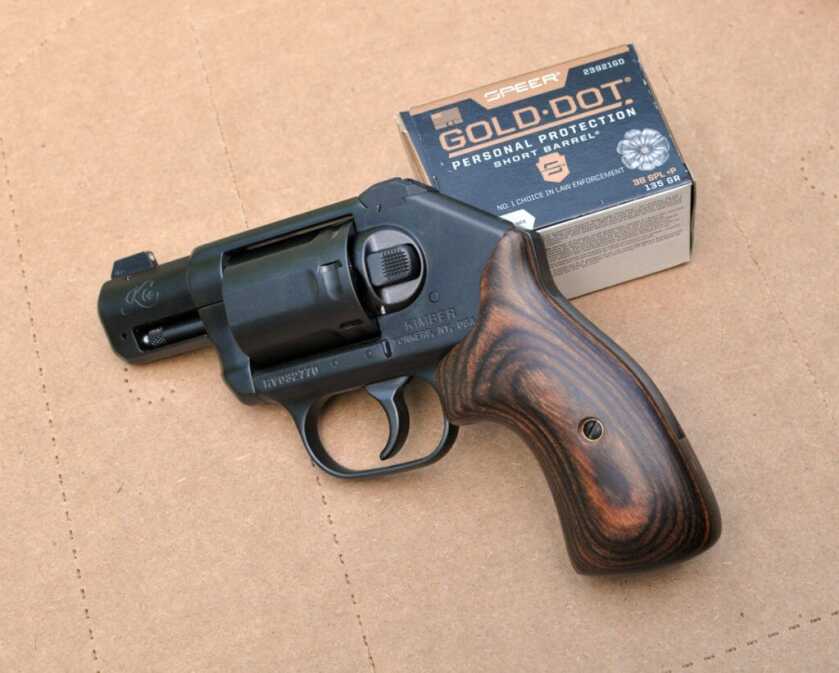
I found the stocks a little small for my hands. As shown in the photos, I replaced the G-10 boot stocks with the longer length wood laminate stocks found on the 3” K6 DAO. The extra inch in length seemed to perfectly balance the Deep Cover and reminded me of an old Colt Detective Special. Another option is the Crimson Trace Laser Grip. Crimson Trace Laser Grip Other than that, I could not find anything else that could improve the DK6 DC. It is about as perfect a revolver as I’ve seen. For those who prefer an exposed hammer, the K6 SADA is available with a 2” barrel with standard three-dot sights and retails for $970. Tritium night sights are available as an upgrade for $129. Kimber K6 Stainless
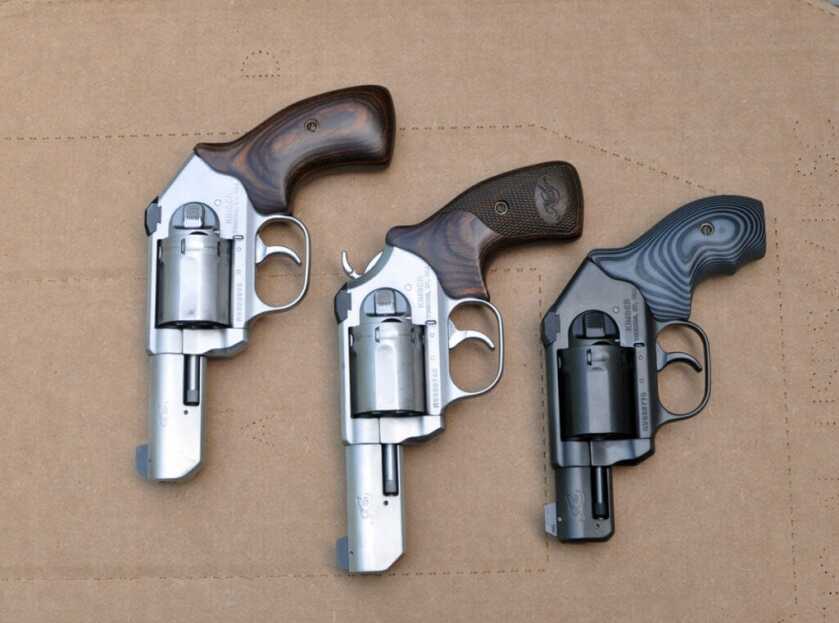
The only drawback is that some may find the Deep Cover’s price tag a little steep. The DCL finish and tritium night sights drive the MSRP up to just over $1,100. The standard K6 Stainless retails for $919. By comparison, the new Colt King Cobra carry retails at $899.00. Outside of the exposed hammer, the Colt King Cobra series is probable, the best comparator on the market. Last year, I evaluated the new 3” King Cobra and found it to be a solid and well-made pistol. Colt King Cobra
The fact is that revolvers cost significantly more to make than polymer auto-loaders. Given the upgrades in finish and sights, $1,155 is not unreasonable. The K6 Deep Cover fills the bill in a lot of ways. The next time you are in your local shop, give one a serious look. You might wind up going home with one.
| Kimber K6 Deep Cover Specifications | |
| Height | 4.46” |
| Weight | 23 oz. |
| OAL | 6.62” |
| Barrel Length | 2” |
| Capacity | 6 |
| Action | Double Action Only |
| Material | Stainless Steel |
| Finish | Black DLC |
| Rear Sight | Tritium |
| Front Sight | Pinned Tritium |
| Stock | Black/Gray G-10 |
| MSRP | $1,155.00 |

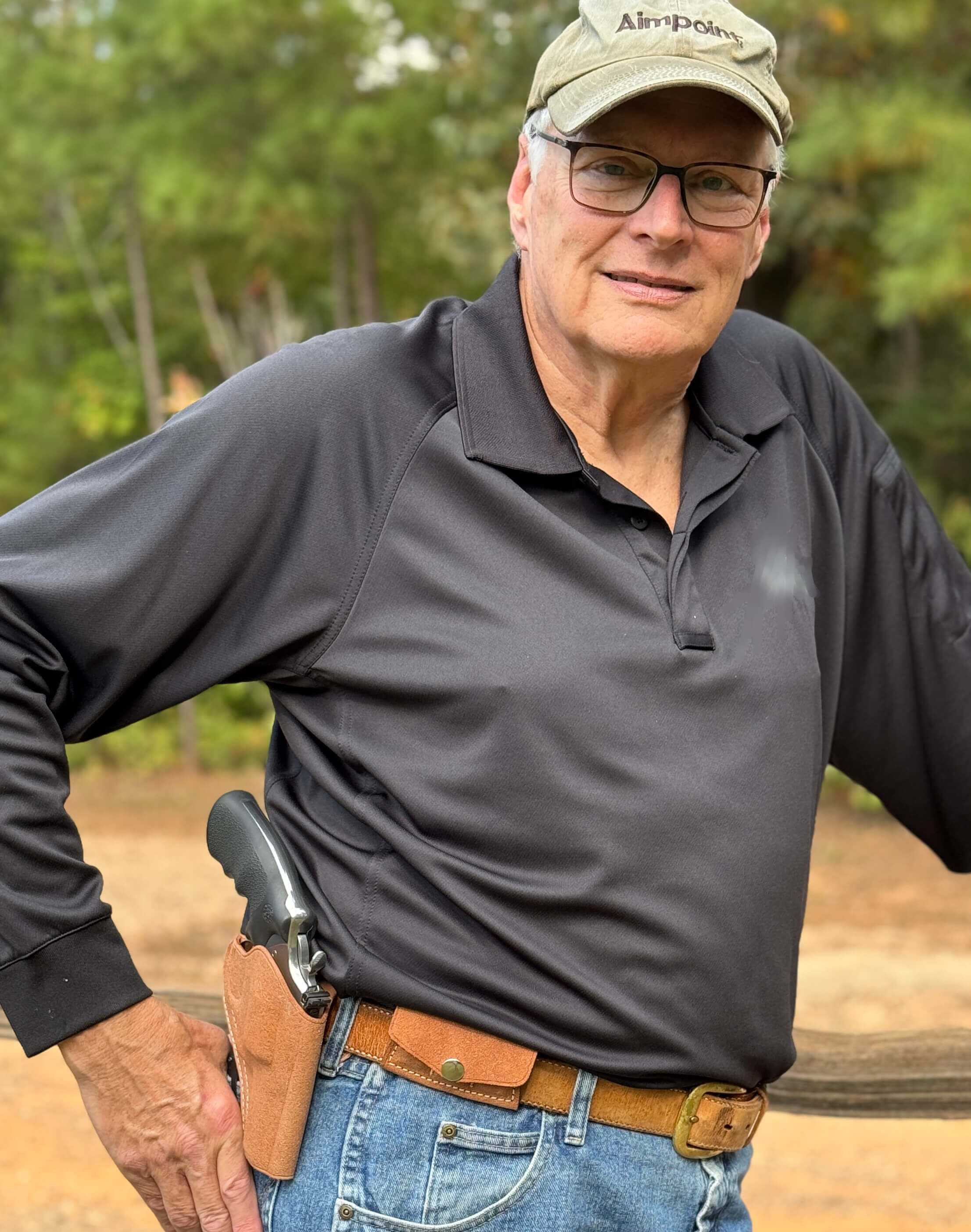
Great comments…..thx !
Curse you Rob Garrett. Curse you to the bottom of the Marianas Trench! Now I must acquire my very own K6 DC dammit. I’m a sucker for snubbies. Few years back I picked up a SW 327 PD. Then a 351 PD to go with the dozen + other snubs.It’s an addiction. Price? Yeah not cheap. But will probably outlast your grandkids. I see people buying all kinds of stupid shit. Newest “EYE Phone” dumbass laptops. Trips to pedoland aka Disney. But a quality revolver is never money wasted.
$1,155.00? For a short barreled revolver? LOL!
Yeah…I’ll happily be sticking with my S&W 642..a buddy of mine has one of the Kimber snubs and the thing is a brick…
Since it is DA only, what is the trigger pull lb. measure? Wife has arthritic fingers but shoots well. I’m looking for DA/SA she can manage.
Nothing here to make me replace my good old Colt Detective Special. 6 shot steel snubby single action capable.
Pretty snubby but too expensive. JMO
I like the gold dot 38+p short barrel but a S&W 340 PD is 11oz I see no advantage to the Kimber and a tendency to pull your pants down with a pocket holster
It only pulls your pants down if you have no ass.
Sorry, but I can’t see that as a replacement for my Sp-101 Ruger. Too big.
It’s basically the same size as the SP101.
If you put a caliper it may be off by 1/10th on an inch in some directions, but side by side or stacking them together an comparing, the difference is not noticeable to the eye (based on multiple video comparisons I’ve seen).
Maybe I’m an old geezer. Hell, I AM an old geezer. Why use less than a 158 grain hollow point in a .357 — or .38 Special for that matter? The more lead you put into an opponent, the more you hurt him.
There are 180 grain HPs now, had I a revolver now, that’s what I’d be using. Speed — fps — is immaterial unless you want a suppressed round; the oppo’s not going to dodge that fast, particularly at less than 30 yards.
125jhp at 1250fps? Is good!
I get 1250 with 124jhp from a g19 using fed hst +p and I got 15rds and the recoil is such I can burn 100 of them and not hurt.I can reach further with them accurately as well. I guess that’s why you can’t find g19s and the ammo lately
$1099 or 3 ruger lcr 38s with tritium front sights. And if you’re a Kimber lover by all means go for it.but realize if you want a snag free quality snub you can get one and have enough left over for a fun weekend in the usa
Sometimes a firearm starts out looking ugly and overtime that same firearm becomes cool looking at later stages. I would use the Glock as an example of this phenomena. Will this firearm proceed past that first stage? Probably NOT.
Is beautiful gun is beautiful gun I want one
I wish you had tested the Speer 135g 357 Gold Dot hollow point from that revolver. The 815 FPS velocity you achieved with the 38 special version is consistent with my results from a 1.875″ barrel J-frame 357. Is it possible that this 38 special goes slower from a 357 chamber?
At any rate, It concerns me asI have seen testing indicating that the 135g Speer GDHP may not expand reliably at this velocity. I expressed my concern about this to Speer after they suggested to me that the 38 round was perfect for my 357. I see now that Speer’s website now makes this claim:
” Speer Gold Dot Short Barrel ammunition has changed that. It is designed to work in barrels as short as 1.9 inches”
The 135g Speer GDHP 357 Mag averaged 1027 FPS from my J-frame, a velocity at which I expect it to perform quite well, and it should have very manageable recoil in the Kimber.
David,
Given the shortage of ammo, I was stuck using what I had on hand.
Thanks for the comment.
Rob
Agree with you, David. I own a K6 with 3″ barrel and laser grip. I have small hands, and I still find the Gold Dot .357 GDHP “short barrel” round quite manageable. That said, terminal performance differs little from the Winchester Ranger 38 Special +P. I guess I just like shooting a .357 round — even a partially-neutered one — out of a .357 revolver.
Although I own one very good belly gun, I have never rejected the idea of a revolver. There is just too many advantages with it – better safety, more reliability, can remain fully loaded for years without weakening a magazine spring, and if you train with speed loaders, you can still do well on loading times. When I first received police training, I was able to out shoot a client of mine, who had one of the few highcap magazines at the time; and few belly guns have high cap mags anyway (except fro the hellcat)
I feel this revolver is literally the epitome of gun design for that purpose, and I hope I get to fire one, before I kick the bucket! Hopefully I have some trading stock to purchase one! I was surprised to see special loads for snubby barrels! Thanks for showing that! I’ve been a +P fan for many years, because I just don’t have the guts to shoot an attacker with hollow point magnum rounds, I’ve seen what it does to perps, even with leg wounds. I’m afraid I’d hesitate to pull the trigger, and that is more dangerous than using a less powerful round. This is a great article, and I thank the author for bringing it to us!!!
This would be a serious contender for my first CCW if not for the price tag — I can get a S&W 686+ for $3-400 less, and I get an additional round. It may have some advantages, but not enough to charge that much more.
Earlier this year I evaluated two Smith Model 19s. I’m old school and didn’t care for the sleeved barrel and MIM parts. A good friend has a 686 that has been back to the factory three times. While competing, the cylinder retention screw failed and the yoke and cylinder fell totally out. It is a serious design flaw.
On the other hand, I’ve evaluated several newer J frames and found them acceptable.
The Kimber is expensive, but with may be worth it to some. I’m just as surprised as many that Kimber can make a revolver this good.
Thanks for your comment.
Rob
Yes. it refers to the individual chambers in the cylinder. Some gunsmiths use the term to differentiate between the chamber of a barrel and the holes in a cylinder. Thanks for asking.
“Charge holes.”? What the devil is a “charge hole”? Never heard the term before in nearly 70 years of shooting. Did the author mean “chambers.”?
Never?! 70 years?! Where ya been?